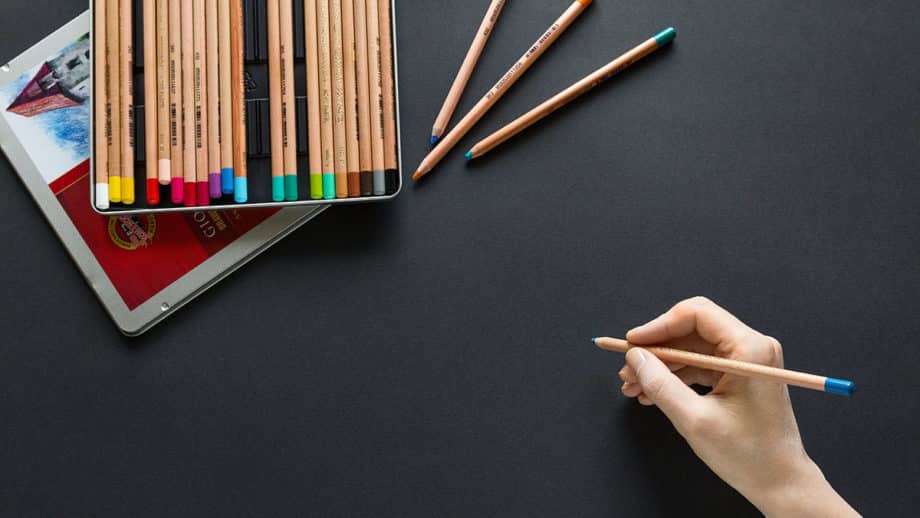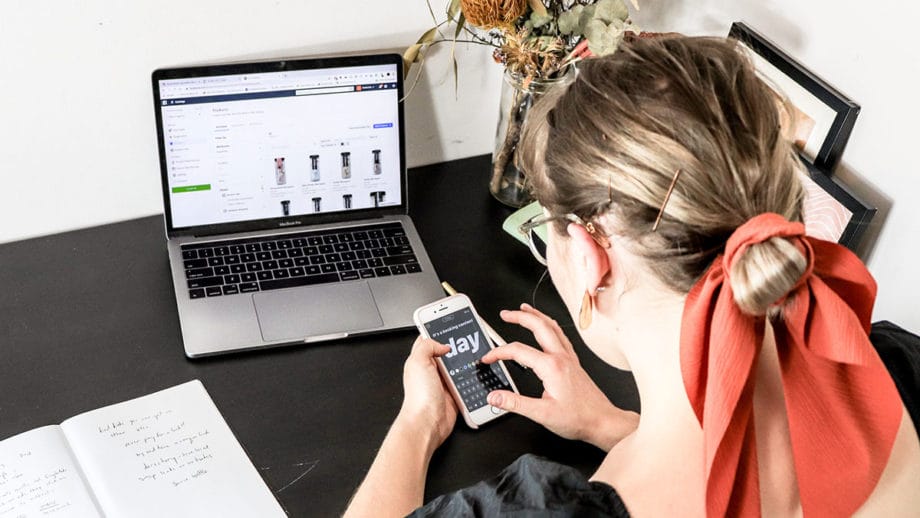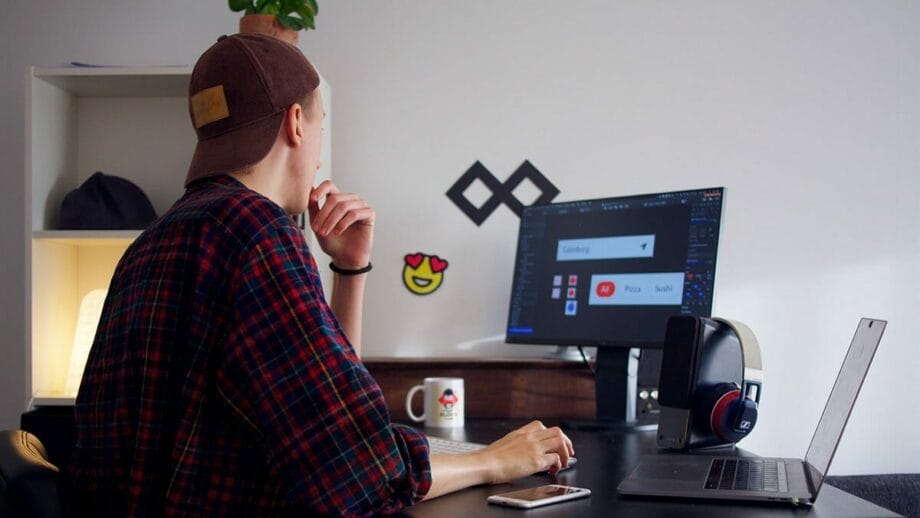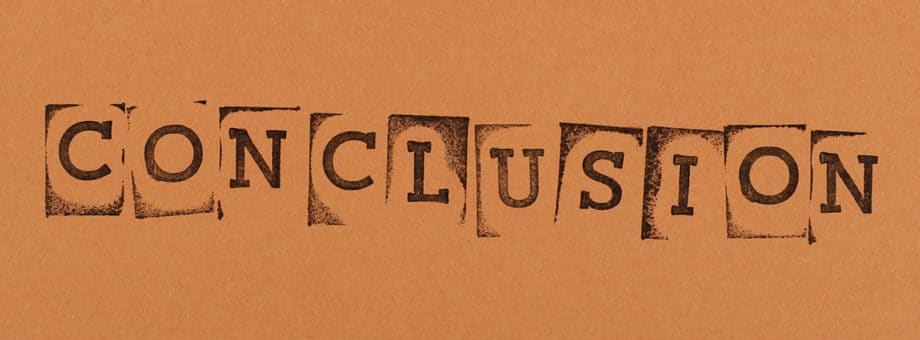Graphic designers are the key people in today’s digital world. They are needed for almost everything from social media advertising to marketing campaigns. They are the backbone of media agencies, advertising, branding, and marketing agencies. While they are hired as full-time employees, graphic design can also be pursued as a freelance career.
A career in freelance graphic design can be just as satisfying as a full-time job. However, before you start your career in freelance graphic designing, you have to consider some aspects that go into it. This blog post will serve as a guide to a freelance graphic design career.
What does a freelance graphic designer do?
Freelance Graphic Designers create visuals and print media for advertising and marketing campaigns. They work for various clients and work in digital mediums to create assets like website content, social media pages, branding logos, and many other types of digital and print media.
15 skills that you can develop to start your career in freelance graphic design

Graphic design is not only about creating vibrant and flashy visuals. It is about communicating your idea to the masses through appealing and influential visuals. When graphic design is able to tell a story through visuals it becomes all the more effective.
Graphic design is successful when it provides a solution to a problem and customers identify with what is being said and communicated through that graphic design visual. As a graphic designer, you should develop some skills. Some of the major ones are shown below.
1. Design software
A freelance graphic designer relies heavily on the design software that they use to create a graphic design. Adobe has a wide range of graphic designing software and some of its offerings like Illustrator, Photoshop, and InDesign are a boon to budding graphic designers.
To be successful as a freelance graphic designer, you should master all the tools and know the functions and features that this software provides. The technical aspects of these software tools are vital to designing effective and appealing graphic designs.
2. Color theory
Colors produce that vivid image that lends appeal to graphic design. Color matching, color schemes, and color balance are all very vital to understand when creating a graphic design. A freelance graphic designer should have a good understanding of color palettes and the mood that a particular color theme generates in the mind of the customer. It is this understanding that makes the difference between a good graphic designer and a bad graphic designer.

3. Branding
Graphic designers should keep the branding in focus in whatever they create. Branding is the one thing that binds and controls everything from content to graphic design and marketing. The message conveyed through graphic design should maintain the branding strategy. Graphic designers do not work alone, but as a team, that collaborates and works with the marketing team. Logos, newsletters, and social media posts, all should be in sync with the branding.
4. Typography
Typography is about knowing fonts and the appeal that they produce in an advertising campaign. It goes beyond this and encompasses the type of fonts that should be used for a certain purpose that they serve. It is essential to know about spacing, typeface, font size, and all other designing aspects of typography that go into graphic designing. The licensing of the font is also a vital aspect that you can’t ignore in any way. Whether you are purchasing premium fonts or downloading free fonts for business usage, you must get the proper license to use them in your client’s projects.
5. Basic coding
As a freelance graphic designer, you are not expected to do much coding. But you should have, at least, basic knowledge about coding languages. A little bit of exposure to coding can be invaluable in website design. Languages such as C++, HTML, and Java can help you decide on the website design and layout, navigation, and other elements. It can balance your website design into a smooth interface that is functional and visually appealing.
6. Editing
As a freelance graphic designer, you will much time editing your images. You will have to work on images and videos. You will have to use graphic designing tools to edit, retouch, and work on photos and graphics to make them web-compatible. To do this requires knowledge of superimposing, color corrections, cutting and trimming, and some video editing skills as well. You may also have to work on layering and working on video editing a bit.
7. Design principles
A graphic design becomes more effective in conveying a message when it stands on some design principles. As a graphic designer, you should know design principles like composition, typography, white space, color composition, balance, alignment, contrast, and others. These design principles work together to make a great graphic design stand out among others. It lends an aesthetic value to graphic design. The working knowledge of these design principles can help in arranging and composing graphic design elements into a fluent graphic design.

8. Ideating and storytelling
Ideas are the starting point for graphic designers to create compelling visuals. Graphic designers should research inspiration and ideas and then incorporate them into their graphic design. They should create storyboards and thumbnails so that they get a clear idea about the story to be told. Drawing and sketching skills can come in handy when visualizing or making a storyboard.
9. UX/UI
Graphic designers should keep the user in focus when creating their graphic design. User Interface (UI) is all about the best possible interface that a user can use to navigate. UX (User Experience) is all about the experience of the user in using the website or the app. Graphic designers should incorporate the experiences of users in creating their website design.
10. Interactive media
A requirement to be freelance graphic designers is that they should know how to work on different media. Graphic design is a field where graphic designers do not just work on graphic design but a whole lot of media like animations, videos, images, etc. Graphic designers should go on experimenting with many media to be able to get a firm hold on their craft.
11. Creativity
Being creative is a skill that every graphic designer should have. You should find new inspiration for your graphic design and keep an open mind. A blocked mind will find it impossible to open up to new ideas and inspiration. As you open your mind, ideas will start to flow, and your graphic design will be more creative than before.

12. Communication skills
Graphic designers have to communicate with clients and customers. They should have excellent communication skills to be able to convey their ideas. Good communication skills can help them in conveying the brand message to the required audience. They should understand client requirements, work with team members, and process feedback from clients so that they become effective communicators. They should understand what are the different design elements that are required for the website design or print layout.
13. Time management
Time management is a skill that makes graphic designers schedule their tasks and complete them on time. Graphic designers should be able to prioritize their work and make a schedule for their various tasks. They have to adhere to deadlines and carry out specific tasks on time. Graphic designers have to work on a strict deadline, and they should have the ability to manage their time well.
14. Project management
Graphic designers should have multitasking skills. As they have to work on various projects, they should manage their projects well. They should take feedback from clients, remember the details of the project, and note down the design requirements, and deadlines to finish them. They could use project management tools to track their workflow and manage phases of their projects. Also, they can monitor the feedback and incorporate updates from clients through these project management tools.
15. Problem-solving
Graphic designers should have problem-solving skills. They have to find a solution that is in the form of a visually appealing graphic design. They have to be creative and innovative so that they provide the desired solution to their clients. Graphic design will ultimately help the client in achieving their business and corporate goals. A graphic designer has to rise to the challenges.
15 ways to start your career in freelance graphic design

To start your freelance graphic design career there are some guidelines that you can use. After you have completed your graphic design course, you can find a lot of ways to start your career in graphic design by doing freelance work. It can be completely satisfying, and you can be your boss.
1. Build a portfolio
A portfolio can be anything from a website, blog, or physical one with your graphic design samples. It is your profile where you include your education, resume, certificates, and other relevant materials. You can build a portfolio on job boards or create a website with samples. You can mention your experiences and show your personal projects to let the employer know that you can do the job.
2. Start on different platforms
Various platforms are available today for showcasing your design portfolio. Fiverr and Upwork are some of the best ones that are currently trending among various professional graphic designers. You can make your graphic design portfolio and showcase your work to them. Doing this can improve your visibility to employers and they can approach you for getting their projects done. Put your portfolio on various platforms so that it greatly improves the chances of you getting the best graphic design projects.
3. Stay updated with trends
The best way to be competent enough as a freelance graphic designer is to stay updated on the latest technological changes. Knowing the trends in graphic design is a battle that is half-won. You can build a network of friends and professionals in the industry and get to know the current software, design trends, social media preferences, design platforms, etc. You can showcase your designs on the latest platforms and choose the best one that is trending in today’s world. Clients often visit the most popular platforms to scoop up fresh minds.
4. Specialize
To showcase your profile, you can specialize in a niche and showcase your samples relevant to that niche. You can create a portfolio with tabs for different categories and keep out the ones that are not relevant to that job profile. You can use the special catteries offered by many websites such as Upwork. It has special profiles that are kept for this very purpose. Prepare your graphic design profile that is best suited for that role.
5. Develop your soft skills
You can develop your soft skills and not just hone your graphic designing skills. Without soft skills, you will not be able to showcase your portfolio in a presentable manner. It will harm your chances of getting noticed. Work more on your communication skills and sharpen your email etiquette.
Employers are very likely to see how you communicate with subordinates and team members. Quite often you will also be working along with marketing team members and receive orders from team leaders who are of different fields and positions. In such times, it is the communication that will show and convey how effective you are and how fluent you are communicating with them.
You can also develop other relevant soft skills that are essential for your job profile like problem-solving, leadership, work ethics, time management, etc.

6. Communicate design to non-designers
Graphic designing comes with its own set of terminology. Graphic designers quite often need to convey and communicate those specific terms to others who don’t know graphic design concepts. This happens in a team where different professionals are working closely to develop a project.
People can have difficulty comprehending what is the meaning of DPI or what RGB stands for. This happens when marketing, social media, advertising, and print media professionals work together.
Communicating the terms and vocabulary to non-designing people can be challenging for graphic designers. They may work out a method by educating themselves. They can then effectively communicate the concepts and terms to make others know what they mean and what is to be expected.
7. Do your marketing
You can do your marketing by looking at other successful profiles and networking with others in your industry. You can go to LinkedIn and build a similar profile with a different twist and angle to it. Take a decent profile photo and connect to others. Remain open and introduce yourself to others in such a way that people feel comfortable approaching you.
8. Network with others and make use of partnerships
You can take the help of your friends in reaching out to other professionals who can help you in developing your profile. Doing this also enhances the chances of working with other professionals in the same industry as yours.
Perhaps you can take the help of a graphic design professional for a project. You can take their help in pitching your services to others. You can approach them with your relevant skills and showcase you as the best for their needs.
Maybe you can approach a copywriter and offer to design for them and also bring along a copywriter to write a professional copy for them.
9. Master other aspects of graphic designing
Freelance graphic designing also includes paperwork and preparing invoices, sending proposals, handling contracts, and many other things that do not come under the purview of graphic designing.
Get some hands-on training in Google Docs and invoicing software if possible. Some of them come with a free-to-use plan, so go ahead and check them out. There are so many such software tools out there that you can use for client management, proposals, invoicing, etc.
There are many free-to-use graphic and web design invoice templates available that you can use to kickstart your journey.
10. Always find new clients
Try finding new clients even if it seems that you have plenty of work at hand. It may happen that you will not have more work in the next month. You can put on alerts if a new job post comes up. Make use of cold emails, networking, and SEO services.

11. Proofread everything
Ignoring the fine text can cost you. So, make it a point to proofread your portfolios and proposals. Paying attention to small details such as spelling mistakes, and typographical errors can make a huge difference. It often portrays a negative image of the graphic designer in the minds of potential employers.
12. Be open to skills test
As a graphic designer, you may have to pass a skills test. You can look out for potential skills tests if you want to shine more than others. Passing such skills tests gives employers more reason to hire you. Such skills test often tests problem-solving skills, communication skills, and ability to work under pressure.
13. Look out for entry-level jobs
Online job portals are full of competition. So, you can approach businesses in your local area and look out for jobs. You can make yourself known if you help a sports team by designing a logo. Maybe, you can find an opportunity with a restaurant if you help one by designing a new menu.
14. Start small
Many graphic designers start with lower rates. Doing this is the most convenient way to attract potential employers. High rates can deter them, and they may view you as a risky prospect. They may not choose you even If you are talented enough. Charge less and you will see that employers will contact you. They may not want to pay you more even if you are an expert in your field.
15. Make a video portfolio
You can make a video portfolio and showcase yourself to potential clients. A video can show your talents and skills and also your entire personality. Your video will showcase your character and employers will also come to know if you can communicate well with others. Use your smartphone camera and introduce yourself with short lines. Ensure that the background of the video is professional, and it makes it easy for others to see your face.
Conclusion

You can make use of the above key points to start your career in freelance graphic design. The main thing is to keep learning as a graphic designer and stay abreast of the latest technological changes. Focus more on soft skills and also sharpen your graphic designing skills by taking regular tests from time to time. It can go a long way in establishing you as a freelance graphic designer.





